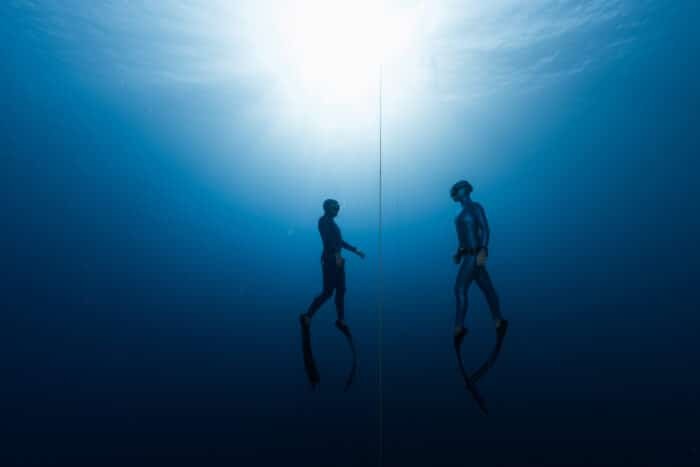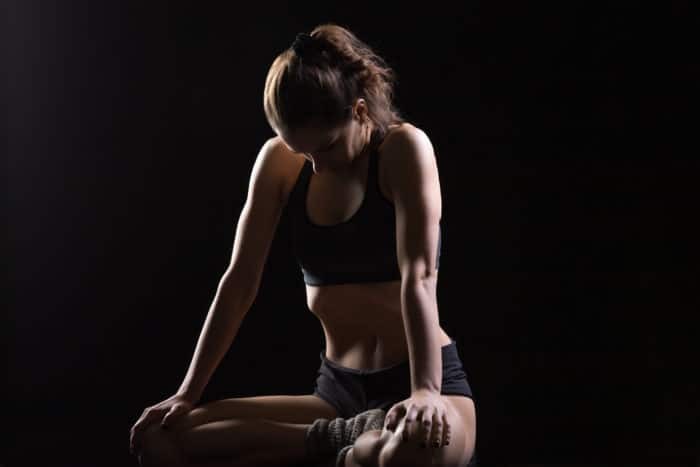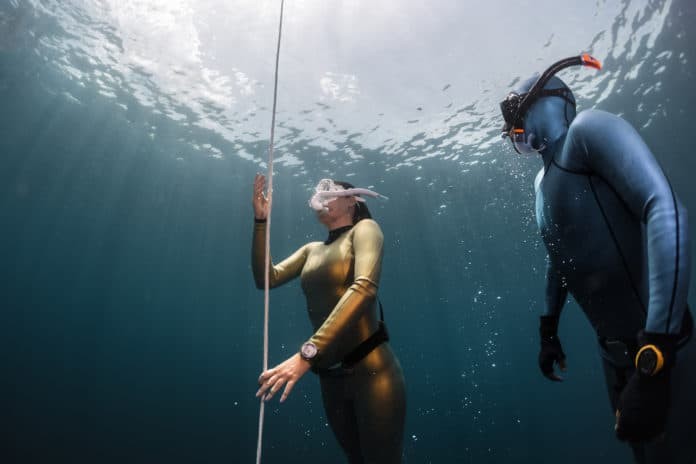In our Complete Guide to Understanding FRC In Freediving: Part 1 article, we reviewed essential terms, definitions, and the science behind FRC diving. In Part 2, we delved into the benefits of FRC dives and how they contribute to deeper dives.
Part 3 will cover specific things you must know about your FRC dives. Remember that these dives should only be incorporated into your training routine if you dive 30m/98ft or deeper comfortably. If diving to shallower depths, focus on comfortable and relaxed dives and approach depth gradually with full lungs.
Note that freedivers should ONLY attempt their first FRC dives and training under the guidance of a qualified freediving instructor or coach. FRC dives can result in severe injuries if not approached correctly and safely. Self-learned FRC diving through articles or videos is NOT recommended.
Be Aware On FRC Dives
Start incorporating FRC dives at the appropriate time
30m/98ft is the magical number for diving deeper is that diving FRC is useful for depth adaptation and training deeper equalization, all while staying relaxed. Dives past the 30 – 35m / 98 – 115ft range are where pressure and equalization become relevant, and real work needs to be put in to overcome potential roadblocks. Before 30m, the main focus is repetitive, comfortable dives on full lungs and with good technique. Training FRC for shallower depths on full lungs just isn’t useful.
Learn and train your first dives under a professional

We stress learning and incorporating FRC diving under a professional instructor or coach instead of just trying it out with your buddy in open water. Diving with half-full lungs means more pressure is put on them at shallower depths. This, in turn, makes squeezes more likely to happen – lung and trachea squeezes, to be more specific. You need to be hyper-aware of pressure on these dives and proper technique so you don’t risk injury!
Training bad technique from the start and progressing to deeper depths can be even more dangerous. So do yourself a favor and learn from an experienced instructor who can gently guide you and help you be successful (and, more importantly – safe) with this advanced freediving technique.
Always have safety
Having safety is not an option on FRC dives but a must. For example, if you are neutrally buoyant at 12m/39ft with full lungs, you will be considerably less buoyant with half-full lungs. This means that even if you black out shallower than 10m/33ft, you might still be negatively buoyant and sink (quickly) back to depth. Prevent this by always having safety from a minimum of 10m on your FRC dives.
Be aware of pressure and your body
Since lungs compress much faster on FRC dives than on full-lung dives, blood shift isn’t fast enough to cope with the increasing negative pressure. This means that your FRC dives will feel more uncomfortable than they would when diving to equivalent full-lung depths. On FRC dives, you must be aware of the sensation of pressure in your chest and throat – these sensations are the factors that should stop your descent and make you turn back to the surface. So even if you still have air in your mouthfill and can equalize deeper, if you start to feel the heaviness of pressure on your chest – it’s time to turn.
Avoid contractions
Contractions on FRC dives are not equal to contractions on full-lung dives. Remember that contractions are caused by high levels of CO2 that accumulate in your blood (first, CO2 accumulates in your lungs and then later in your blood once diffusion comes to a halt). But since you are only taking ‘half’ of a breath, the increase in partial pressure of CO2 is happening slower and with less dramatic jumps in pressure, thereby slowing down CO2 accumulation in your lungs. This slow accumulation in the lungs means it takes much longer for diffusion to stop and for CO2 to accumulate in your blood (which causes contractions).
There is a theory among freedivers that contractions on FRC dives are caused by tension in your breathing muscles. In a relaxed position, your diaphragm sits higher in your ribcage. However, when you inhale and hold your breath, your diaphragm contracts downward for an extended period. Therefore, contractions occur as a response from your brain trying to tell your diaphragm to relax.
You want to avoid contractions on FRC dives because contractions produce a movement in your thoracic cavity, resulting in you feeling negative pressure in your throat. Since the air in your trachea compresses quicker on FRC dives, contractions on FRC can result in a trachea squeeze.
Keep progression slow
FRC dives need to be approached in a slow and controlled manner. Big jumps in depth are NOT allowed! Progression should be over days and weeks, not within a single training session.
Don’t go for Personal Bests in FRC dives – they aren’t technically real. Each passive exhale before a dive differs from the one before, and many factors influence how much air you exhale. The main objectives are to get used to the sensations of pressure, train equalization, and stay relaxed on every dive. That means if you start to feel pressure but see that the end of the line is just out of reach, stay strong and turn. That’s a lot less pressure on you at the end (pun intended)!
Practice kapalabhati and uddiyana bandha

Kapalabhati, also known as ‘breath of fire,’ and uddiyana bandha, also called ‘empty lung stretching,’ are your best bets to prepare for FRC diving. Kapalabhati strengthens your diaphragm (with the added benefit of clearing your nose and sinuses) and prepares it for uddiyana bandha. Meanwhile, uddiyana bandha is the best exercise for diaphragm flexibility since it involves full exhalation and opening your chest. This movement forces you to relax your belly and let your diaphragm move further in your thoracic cavity – exactly what you want to happen on FRC and deeper, full-lung dives!
You can practice kapalabhati and uddiyana bandha as much as you want on your dry days, but if you are diving later in the day – go easy on uddiyana bandha and perform fewer repetitions than you usually would.
What’s next?
Okay – that’s it, freedivers! You now have some theory under your weight belts and know a lot about what FRC is, the benefits of FRC diving, and things to be aware of on your dives. This knowledge should help you understand exactly what’s going on in your body during these types of dives and how you can use FRC to go deeper comfortably.
The next step?
Finding an experienced instructor or coach to teach you the practical side of FRC and guide you to excellent technique.
Safe diving!
Additional Contributions from Apnea Bali

